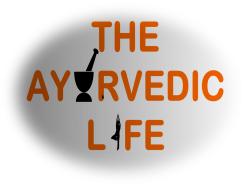 Golden brown crunchy bread enclosing a savory, spicy and satisfying potato filling – bread pockets are comforting, filling, easy to make and delicious all at once!
Golden brown crunchy bread enclosing a savory, spicy and satisfying potato filling – bread pockets are comforting, filling, easy to make and delicious all at once!
Ingredients (makes about 5 bread pockets):
- 5 bread slices (you may use white/wheat – whatever you prefer)
- Ghee (to brush on the bread pockets – approximately 1 tbsp)
- Potatoes (2 medium sized ones)
- Onion (finely chopped) (1/2 of a medium sized one)
- Ginger garlic green chilly paste (1 tbsp)
- Oil (1 tbsp)
- Cumin (jeera) seeds (1/2 tsp)
- Asafetida (hing) powder (1/4 tsp)
- Turmeric (haldi) powder (1/2 tsp)
- Coriander (dhaniya) powder (1/2 tsp)
- Dry mango (amchur) powder (1/2 tsp) (you can substitute this with lemon juice)
Method:
- Cook the potatoes until they are done, but not mushy (I usually pressure cook the potatoes cut into halves for 2 whistles and simmer for 5 minutes). Cool, peel, mash and keep aside.
- Heat oil on medium heat in a pan. When the oil is hot, add the cumin seeds.
- After they start spluttering, reduce the heat to simmer and add the spice powders, onion and ginger garlic chilly paste.
- Increase the heat to medium again and cook until the onions are translucent and the raw smell of garlic goes away.
- Add the mashed potatoes, and salt. Mix well and ensure that the potatoes and onions form a homogeneous mixture. Keep the mixture aside so that it cools down a bit.
- Cut off the edges from the bread slices.
- Using a rolling pin, flatten the slices.
- Place some of the filling on the bread slice.
- Fold over one side of the bread and push it in nicely so that the bread sticks to the filling somewhat.
- Apply some water using a brush or your fingers on the remaining flap of bread. Fold it and make it fuse with the other side using some more water. You are going to sort of paste it to the other side, using water as a glue of sorts.
- To fuse the sides, first push in the filling to the center, creating space to fuse the opposite sides of the bread. Again, using water as glue, join bread to fuse both sides one by one.
- Now, brush some ghee on each side of the prepared pocket and place it on a tava (griddle) on medium to low heat.
- Cook until it reaches a nice golden brown color. Play with the heat settings because you don’t want it to be too high – you might end up with a darker color than you want!
- Serve your bread pockets cut or as is with ketchup or chutney or just as is! These make a great kid (and adult) lunch box or even a light family dinner! Enjoy!
Tastes (Rasa):
Sweet (bread, potatoes, ghee, oil), sour (dry mango powder/lemon), salty (salt), bitter (coriander, curry leaves, turmeric), pungent (onions, chillies, ginger, garlic, cumin), astringent (asafetida, curry leaves).
Doshic Influence:
Wheat bread or white bread is ultimately wheat. White flour is just an overly refined form of wheat – wheat stripped off of much of its nutritive content! Wheat is nutritive, strengthening, calming, but is also sticky and heavy, making it kapha provoking. It is okay for pittas. Vatas with their weak digestions may find wheat difficult to digest. Potatoes are also heavy, sweet and nutritive – again kapha aggravating qualities. But adding ghee and pungent spices counters these effects of potatoes, making them suitable for kaphas and vatas. Ghee is tridoshic and improves digestion. Cumin is tridoshic, aids in digestion and helps flush toxins from the body. Coriander is also tridoshic, is cooling and is great for digestion. Turmeric is used in all blood related disorders, especially those due to Pitta and Kapha. Its heat alleviates Vata and Kapha. A large dose aggravates Pitta. Chillies are warming and pungent, relieves kapha and vata, and increases pitta. Garlic is a warming stimulant and is great for blood circulation and for vatas and kaphas. It can tend to be pitta provoking. Fresh ginger is tridoshic in general and is a great digestive and anti-inflammatory root. So overall, this dish has countered the kaphagenic effects of the bread and potatoes quite well using a good mix of warming spices, making it a relatively tridoshic recipe.
Effects on the Mind (Gunas):
White and wheat flour (but white flour more than whole wheat flour) both have tamasic qualities in them – they tend to be harder to digest, clog channels and potentially dull the mind. But there are many sattvic and rajasic spices to counter this, reducing the tamas in the dish considerably.








